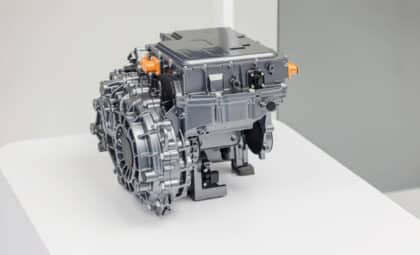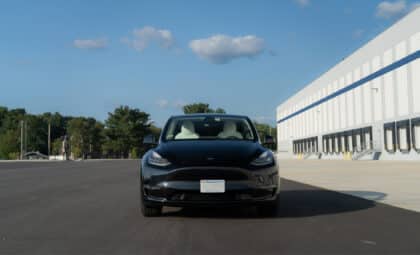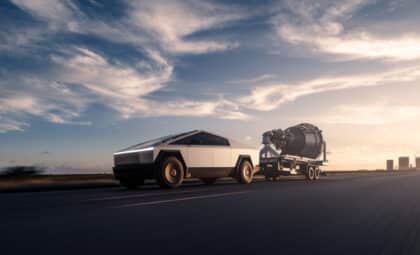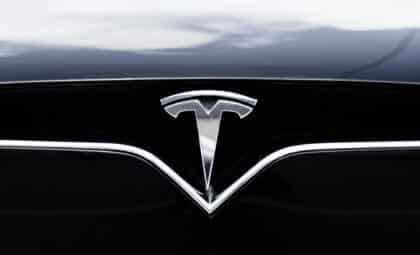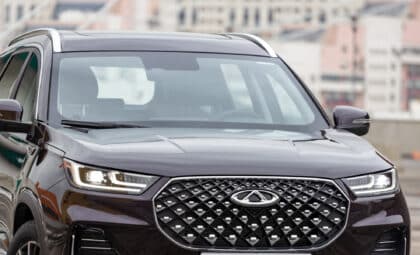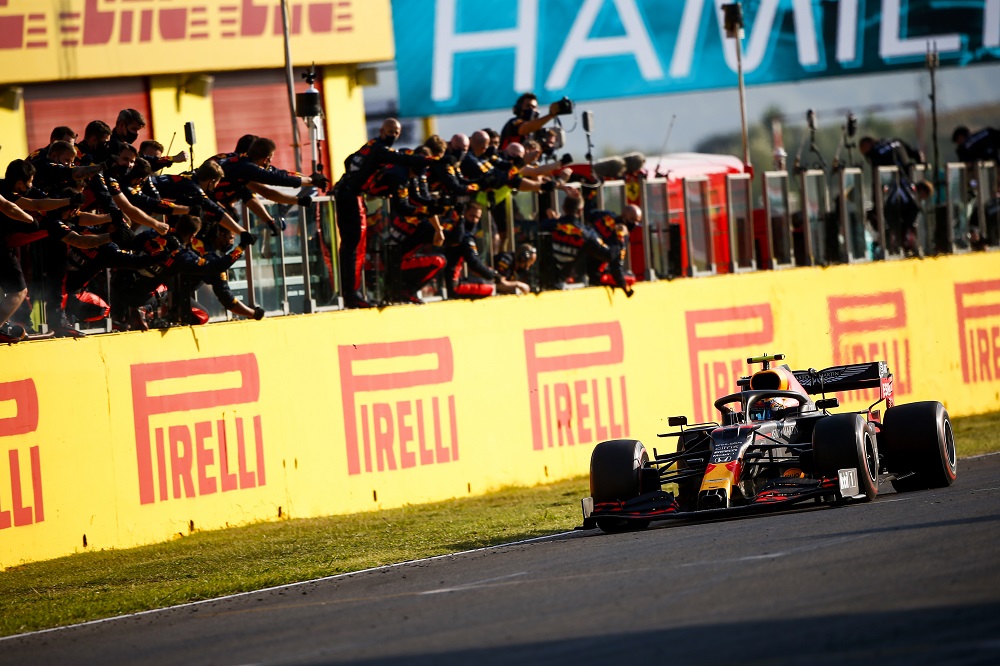
Photo: Honda
Last weekend, Formula 1 headed for the very first time to the Mugello circuit, which hosted the Tuscan Grand Prix. It was a celebration of Ferrari’s 1000th race in the sport, but the team’s poor performances in 2020 and at Mugello made the celebration somewhat underwhelming. Still, the race itself had plenty of excitement to offer and featured a genuinely frightening, multi-car crash.
In my recap of the Italian Grand Prix, I had written that red flags, which temporarily stop the race, were quite rare in F1. At Mugello, we got two. But to understand what happened, you’ve got to understand a little bit about the circuit itself. It has a massively long main straight, with a start/finish line quite a long way from the first corner. As a result, it can be a disadvantage to be just ahead of another driver at the line.
F1 Tech: How the Honda e:HEV incorporates it
This was demonstrated right away when the race got started on Sunday afternoon. Valtteri Bottas, who had qualified second behind Lewis Hamilton, absolutely mugged his rival at the start. Hamilton would probably have lost out to Max Verstappen too had the latter’s engine not failed.
By the first corner, the slipstream effect had caused most of the field to be bunched up, and the inevitable happened. At the second corner, two cars squeezed a third and all three crashed out the Tuscan Grand Prix. Cue the safety car, but not the red flags. Those came later.
Under standard procedures, the race leader becomes the de facto pace setter for the rest of the field after the safety car goes back to the pits. The race restarts when the leader steps on the throttle or crosses the start/finish line. Accelerating and slowing down again is forbidden.
As I described earlier, the line is quite far from the first corner. Knowing this, Bottas also knew he had to wait until the last possible moment to plant his foot on the throttle — giving Hamilton the least amount of track to get into his slipstream for an easy overtake.
Pit Stop: F1 drivers get a free one under red flags, and you should too
Bottas followed the rules and maintained speed while weaving to keep his tires warm. But visibility out of an F1 cockpit is not great, and other than the drivers directly behind Bottas, most couldn’t see what he was doing. Those in the midfield and the back are not doing much else than reacting to what the drivers around them are doing.
Notably, many of the midfield drivers were not as bunched together as those in the front, and gaps had begun to form. Gaps that drivers eventually attempted to close as they neared the inevitable restart, leading those behind them to believe the race had restarted, only to suddenly come up on a wall of near-stationary cars obscured by the cars directly ahead of them.
For some, evasive action was not possible. Carlos Sainz’s crash was particularly frightening as he plowed into the back of Antonio Giovinazzi, who had already been half lifted upward from crashing into Kevin Magnussen. Giovinazzi was then pushed straight into Nicholas Latifi’s sidepod. It seemed a miracle nobody was injured.
The race was thus red flagged to allow the track to be cleaned up and barriers to be repaired as everyone grappled over what had just happened. By the time the race started again, almost an hour after the first start, only nine laps had been completed, all of them under the safety car, and only 13 cars were left out of 20.
Previous Race: Gasly’s shock victory in Monza
The Tuscan Grand Prix went on as normal until lap 44, when Lance Stroll experienced a puncture at one of the many high-speed corners and skidded across the gravel to crash violently against the barriers. He was okay, but the race was red flagged again. Red flags were not necessary and it would have made more sense to send out the safety car instead, but I have a feeling the race director didn’t want to risk any potential repeat of the previous incident.
Hamilton ultimately won the whole thing, followed by Bottas and Alexander Albon, who became the first Thai ever to step on an F1 podium after getting so close in Brazil and Austria. Surprisingly, the race was full of good moves and overtakes, more than I had expected and more than the drivers themselves had even expected, as they described after the race. In fact, the drivers had nothing but praise for Mugello, expressing hope it will return in the future.
I hope it comes back too. But maybe some new safety car rules are in order. Crashes can be fun to look at, but crashes like those that took place on Sunday are only frightening.
Post-COVID 2021 F1 Calendar: Full of unique races 
Kurt Verlin was born in France and lives in the United States. Throughout his life he was always told French was the language of romance, but it was English he fell in love with. He likes cats, music, cars, 30 Rock, Formula 1, and pretending to be a race car driver in simulators; but most of all, he just likes to write about it all. See more articles by Kurt.



